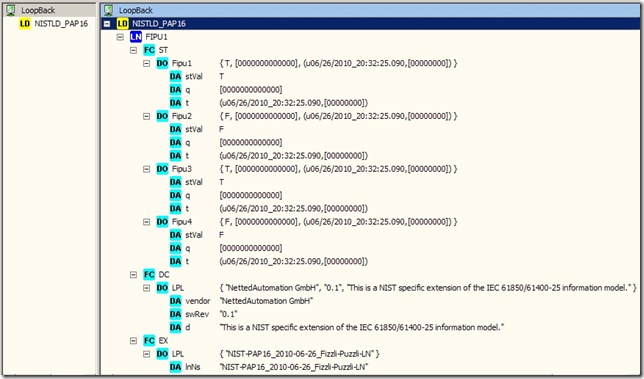IEC 61850 und IEC 61400-25 define already (or just) some hundreds of Information Models (LNs, Data Objects, and Common Data Classes).
Click HERE for a list of some 285 defined Logical Nodes.
The list will definitely grow while we go. Standards are defined based on consensus of experts and national committees involved. Very often the groups cannot agree on adding some useful information model - so it is often decided to NOT include the model into the standard. In other cases it is decided to just define the model as an optional definition.
A lot of information needed in real systems is not (yet) defined as part of the standards - and may never be standardized.
To allow the users of the standard to use the modeling method, the basic models like types and Common Data Classes, and Data Objects, IEC 61850-7-1 defines a STANDARD Rule on how to cope with needed extensions. The rule is named "Name Space Concept".
The name space concept follows the needs of new models as depicted in the following figure from draft edition 2 of IEC 61850 (edition 1 already defined the name space concept):
The rules defined allows:
- To extend any existing standardized LN by adding Data Objects from other LN classes or by defining new Data Objects.
- To extend any existing standardized Data Object by adding Data Attributes or by defining new Common Data Classes.
The following excerpt of Logical Node Name Plate Common Data Class (LPL) shows the corresponding attribute "lnNs" (Logicla Node Name Space). This is used to "tag" an extended Information Model. In this case an extended LN. Extended could mean a new LN or a LN that comprises new Data Objects.
Any Common Data Class has the following attributes:
The "dataNs" is intended to identify (or reference) the extended Data Object.
The complete rules can be found in edition 1 of IEC 61850-7-1 - these rules will be refined in edition 2 which will be published as International Standard later in 2010.
The current rules (edition 1) allow to define any extension needed for the Wind Power application in the US.
There is no need to wait until any future edition of IEC 61400-25-2 or any other standard models are published before people can use these standards in the US (and global wind power market). If models need to be extended this can be done on a user or vendor basis, on a market base (NIST, FERC, NERC, ...), regional base (North America), or a global (UCA International Usersgroup, or IEC standard) base.
It is very likely that the Information Models will grow while the industry goes.
If somebody would wait until ALL his currently needed information (in existing applications) is modeled as LNs, Data Objects and Common Data Classes and is standardized, then he would NEVER START to use the standard.
The crucial benefit of the IEC 61850 based standards is the independence of the models from the communication services, and the independence of the services from the communication protocols:
The Name Space Concept is a very SMART solution to make the grids smarter - in a few steps.
See also the next two blog postings.











